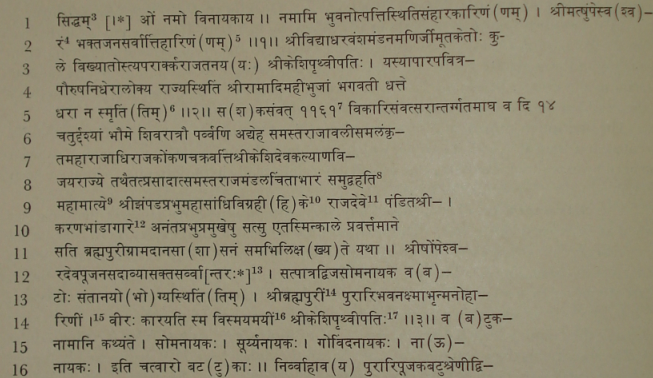|
The Indian Analyst
|
North Indian Inscriptions |
INSCRIPTIONS OF THE SILAHARAS OF NORTH KONKAN
..The date of the present inscription was read as Śaka 1162 by Dikshit, which he equated with A.D. 1239-1240. He has stated that Māgha va. di. 14 in that year fell on Tuesday as stated, the Christian equivalent of the date being 24th January A.D. 1240. They cyclic year then was Vikārin as stated here. This equivalent would be possible only if the Śaka year 1162 is taken as current; but current years are cited only exceptionally. The estampage, however, shows that Bhagvanlal’s reading Śaka 1161 is correct. That year was an expired one in A.D. 1239-1240. The date of the gift is, as stated before, Tuesday, the 24th January A.D. 1240. ..As for the place-names mentioned in the present inscription, Dikshit suggested that Brahmapurī must be identical with modern Chaudharapāḍā, where are seen the remains of a temple[1]. Bōpagrāma is modern Bābgāon, situated about two miles to the west of the findspot of the inscription. Māñjasapallī, which was probably its hamlet, cannot now be traced.
.. Text[2]
[1] No. place-name like Brahmapurī, Brahmavāḍī, Brāhmaṇagāon, Brāhmaṇī etc. occurs in the Bhiwaṇḍī
tākukā of the Ṭhāṇā District.
|
|||||||||||||||||||||||||||||||||||||||||||||||||||||||||||||||||||||||||||||||||||||||||||||||||||||||||||||||||||||
| > |
|
>
|








